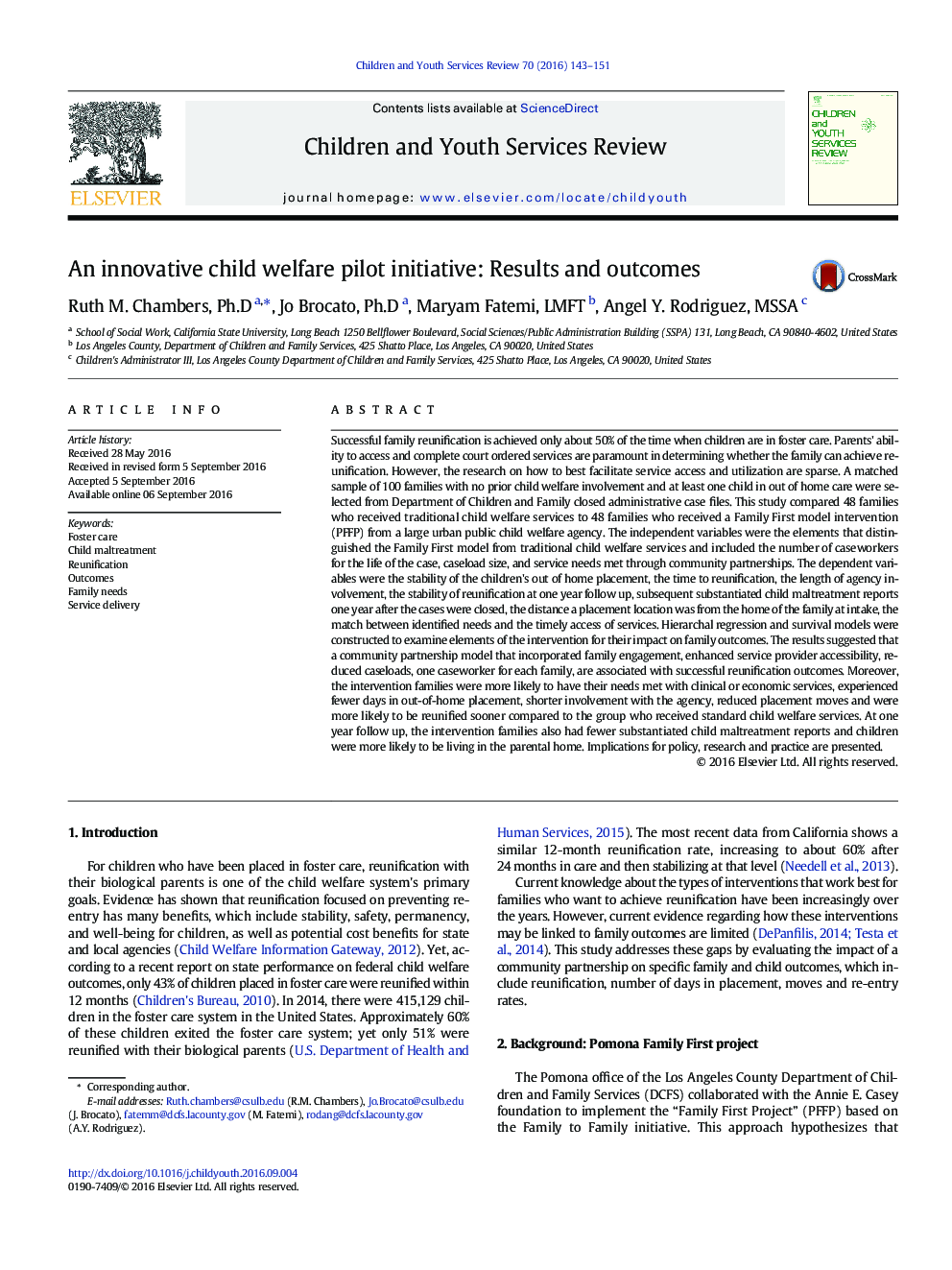| Article ID | Journal | Published Year | Pages | File Type |
|---|---|---|---|---|
| 4936629 | Children and Youth Services Review | 2016 | 9 Pages |
Abstract
Successful family reunification is achieved only about 50% of the time when children are in foster care. Parents' ability to access and complete court ordered services are paramount in determining whether the family can achieve reunification. However, the research on how to best facilitate service access and utilization are sparse. A matched sample of 100 families with no prior child welfare involvement and at least one child in out of home care were selected from Department of Children and Family closed administrative case files. This study compared 48 families who received traditional child welfare services to 48 families who received a Family First model intervention (PFFP) from a large urban public child welfare agency. The independent variables were the elements that distinguished the Family First model from traditional child welfare services and included the number of caseworkers for the life of the case, caseload size, and service needs met through community partnerships. The dependent variables were the stability of the children's out of home placement, the time to reunification, the length of agency involvement, the stability of reunification at one year follow up, subsequent substantiated child maltreatment reports one year after the cases were closed, the distance a placement location was from the home of the family at intake, the match between identified needs and the timely access of services. Hierarchal regression and survival models were constructed to examine elements of the intervention for their impact on family outcomes. The results suggested that a community partnership model that incorporated family engagement, enhanced service provider accessibility, reduced caseloads, one caseworker for each family, are associated with successful reunification outcomes. Moreover, the intervention families were more likely to have their needs met with clinical or economic services, experienced fewer days in out-of-home placement, shorter involvement with the agency, reduced placement moves and were more likely to be reunified sooner compared to the group who received standard child welfare services. At one year follow up, the intervention families also had fewer substantiated child maltreatment reports and children were more likely to be living in the parental home. Implications for policy, research and practice are presented.
Related Topics
Health Sciences
Medicine and Dentistry
Perinatology, Pediatrics and Child Health
Authors
Ruth M. Ph.D, Jo Ph.D, Maryam LMFT, Angel Y. MSSA,
